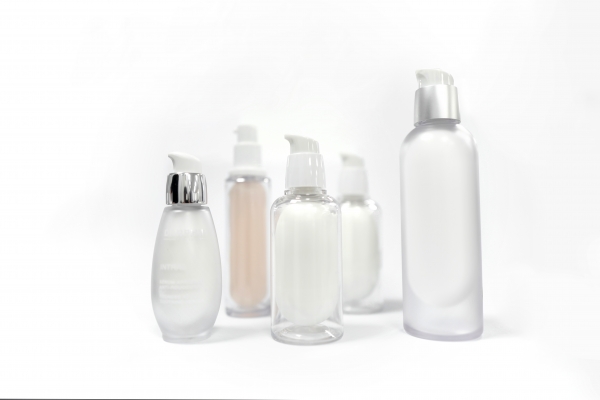
No one exactly knows since when the pump bottles and containers for shampoos or lotions were used, and we have been using plastic containers with a pump for a long time. When plastics were first developed, plastics were recognized as one of the most outstanding inventions in human history due to the many advantages of it.
However, despite the various advantages of plastics, the abuse of plastics in recent years has created several social problems, and this is why many countries around the world are making various efforts to reduce the use of plastics and replace plastics. Plastic is originally derived from the word plasticity, which can be divided into natural resins and synthetic resins. The natural plastic resin was the first celluloid invented in 1868 as a substitute for billiard balls made of ivory in the United States. The phenol formalin resin (Bakelite) invented in 1909 replaced it, and the era of synthetic resin was opened. Since plastics are characterized by their light weight, ease of processing, and low cost, plastics have become a necessity in our daily life and are now being used in a variety of packaging materials, consumer products, and industrial materials. However, when the plastic is used as a container for storing contents to be consumed by a person, there are the following problems.
1. The occurrence of environmental hormones
Most plastics produce harmful environmental hormones such as bisphenol A (BPA), which causes many harmful effects on the human body. Recently, BPA has been detected in plastics used in infant feeding bottles and has become a social problem. For this reason, silicone, which has no concern about the generation of environmental hormones, has been used in recent years.
2. The major cause of environmental destruction
Plastics are not biodegradable. Because of this, when the plastic is buried in the ground, it is not decomposed, and it is broken into micro-plastic microbeads, which contaminate the soil and the river. When it flows into the sea, it becomes the main cause of the destruction of the marine ecosystem. In particular, when incinerating plastics, toxic substances such as dioxin are released, and carbon dioxide concentration is increased, thereby accelerating the greenhouse effect of the earth.
3. Difficulties in recycling
For this reason, plastic recycling is a very important issue. To recycle plastic, it is necessary to collect the plastic, to peel off the packaging, and to clean and crush the remaining contents in the container. One of the important factors determining the recycling rate of plastics is the washing of the contents. In the case of the contents with high viscosity which is difficult to be treated by water washing or the contents mixed with oil, it is impossible to remove residues of remaining contents by water washing alone. Therefore, cosmetic containers cannot be recycled most of the time. For this reason, plastic recycling is a very important issue. However, despite these various issues, it is difficult to exclude plastic as a cosmetic container material considering durability, design diversity, and manufacturing cost. In recent years, many cosmetic brands have been trying to reduce the use of plastics or increase their recycling rate. For example, Rush LUSH, a British cosmetics company, has excluded the use of plastic through making solid shampoo without plastic packaging, P&G is making efforts to raise the recycling rate by collecting plastic engineers. Despite these efforts, however, no fundamental solution has been found for the plastic containers used.

Development of innovative eco-friendly container solution
The “Innerbottle” is made of a special silicone inner bottle which has elasticity in the existing plastic container and can be shrunk and expanded. By filling the contents in the Innerbottle, ZERO WASTES without residue is realized, and the contents do not coat on the plastic container. We have developed a solution that can be recycled. Through this, it is possible to maximize the plastic recycling while minimizing contamination of soil and water by the remaining contents. Furthermore, the Innerbottle developed a packaging solution that can be recycled 100% through paper containers using recycled paper, which is relatively easy to recycle because there is no restriction on outer containers because contents are protected by silicone.
1. Perfect use without residual
Innerbottle inserted in the existing cosmetic container (outer container) is made of special silicone material which can expand more than 300%, and shrinks according to the use of contents. Accordingly, when the contents are scarcely left, the surface area of the Innerbottle is minimized, and the materials in the Innerbottle can be discharged without remaining amount (less than 1% of the experimental value). This not only provides the user with the ability to use all contents but also minimizes the environmental contamination by the materials remaining in the container if the container is discarded as waste.
2. Silicon, safe and easy to recycle
Due to the strong bonding force between oxygen and silicon, silicone has stable properties at from -80 °C to 200 °C without change of physical states and is chemically stable as well. Because of this, it is widely used as raw materials for tableware, infant products, and implants to be inserted into the human body, as well as in the aerospace industry. Particularly, silicone is eco-friendly material since it hardly generates harmful substances when incinerated and can be recycled as silicone oil.
3. Safe storage of the materials
The most crucial role in packaging is to keep the contents safe. Silicone does not generate environmental hormones such as BPA, and in the case of the special type of silicone of the Innerbottle, the internal dispersive pressure of the Innerbottle is higher than the external pressure of the Innerbottle due to the contraction pressure of the Innerbottle and that the air hardly penetrates inside. The double protection of the outer container and the Innerbottle can safely protect the contents from denaturation or oxidation due to air exposure.
The future of packaging
Until now, the role of packaging has been a design element for differentiating products along with the safe storage of contents, which is a basic function of packaging. To emphasize these design factors, excessive packaging and excessive use of plastic became a problem. In the case of future packaging, design elements cannot be neglected along with the basic function of packaging, but packaging design trends will change with minimalism, and the eco-innerbottle packaging solutions will enable various packaging designs to meet these trends.

